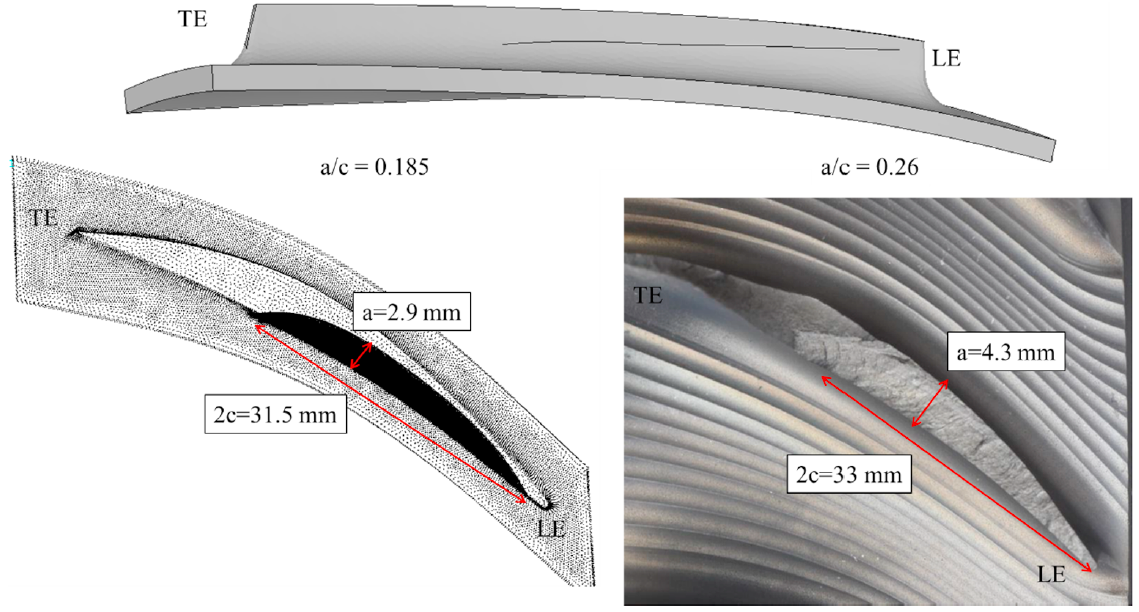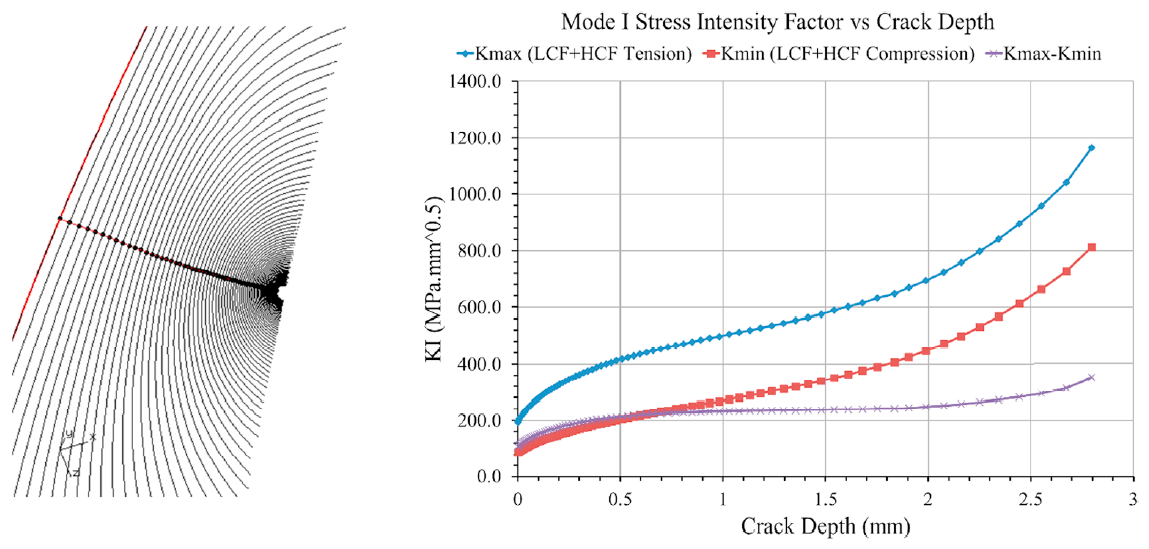解析事例‐5
Low Cycle Fatigue (LCF)とHigh Cycle Fatigue (HCF)の合成ロード状況下の航空エンジン高圧コンプレッサーブレードのき裂進展モデリング
資料より抜粋(本Web向けに図番号を変更):
Under combined HCF+LCF non-proportional cyclic loading, the direction, aspect ratio, and shape predicted by the crack growth simulation shown in Fig. 1 agreed well with the fractured airfoils, indicating that the fractures are due to combined LCF and HCF loading. The concentrated bending force added to simulate the HCF resonant vibration resulted in a direction of crack growth which better aligned with the fractured components. This supports the initial assumption that the single first bending mode was responsible for the crack growth and ultimately led to fracture.

Fig1. Crack growth simulation under combined HCF+LCF loading. Predictions (left) agree well with the fractured airfoils (right) in regard to direction, aspect ratio, and shape.

Fig2. Mode I SIF along crack depth under LCF+HCF Tension and LCF+HCF Compression
参照:Mangardich D., Abrari F., Fawaza Z., Modeling crack growth of an aircraft engine high pressure compressor blade under combined HCF and LCF loading Engineering Fracture Mechanics, Available online 24 April 2019

